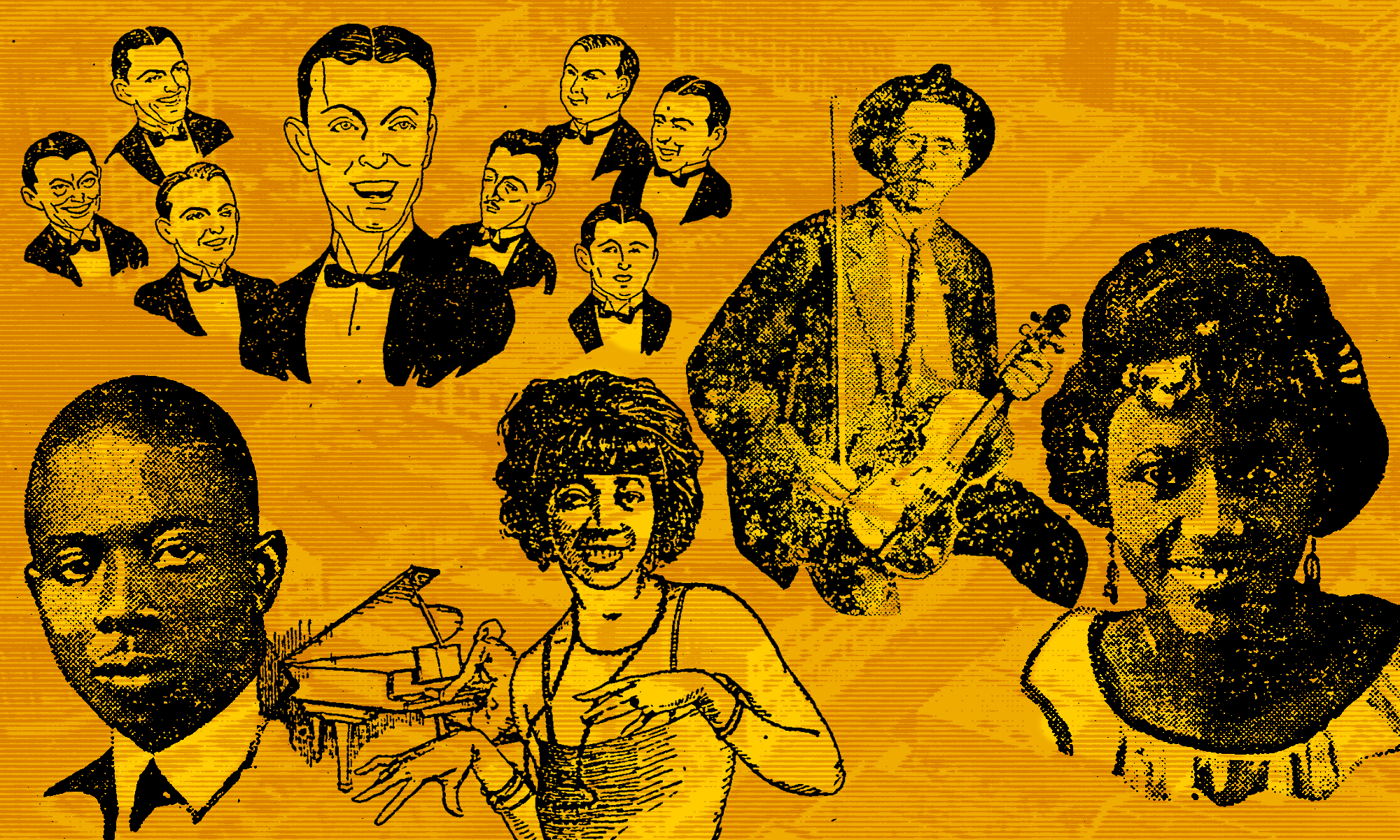Until the spring of 2017, the exact location of Okeh’s June 1923 recording sessions had been lost to time. However, that did not stop authors from referencing the building as best they could with the little information they had.
Publications that reference Nassau Street specifically

“On June 14, 1923, an enterprising director for Okeh Records named Ralph Peer, with acoustical equipment set up in a rented loft on Nassau Street in Atlanta, recorded the singing and playing a southern ‘hillbilly’ musician known as Fiddlin’ John Carson.”
Gilbert Chase, America’s Music: From the Pilgrims to the Present. (Urbana: University of Illinois Press, 1987).

“About thirty recordings will be made at the laboratory of the company on Nassau Street, including selections by the Morehouse College Quartet of Negro singers, “Fiddlin'” John Carson, the Seven Aces, and other organizations.” reprinted from Atlanta Journal – June 15, 1923
Wayne Daniel, Pickin’ on Peachtree: A History of Country Music in Atlanta, Georgia. (Urbana: University of Illinois Press, 2001).

“The June 15th edition of the Atlanta Journal advertised Peer’s visit, and by the time a makeshift recording laboratory was set up in an empty loft on Nassau Street quite a lot of local talent had assembled.”
Robert Dixon and John Godrich, Recording the Blues. (London: Studio Vista, 1970).

“Peer approved the idea of a recording session in Atlanta, and Brockman rented space on Nassau Street and invited a variety of acts—including Carson—to participate. No one present in the studio that day could have anticipated the cultural phenomenon they were launching.”
Steve Goodson, Highbrows, Hillbillies, and Hellfire: Public Entertainment in Atlanta, 1880-1930. (Athens: University of Georgia Press, 2007).

“Meanwhile, Okeh engineers Charles Hibbard and Peter Decker proceeded to Atlanta with the acoustical recording equipment. Brockman rented an empty loft on Nassau Street, off Spring Street, from a suspicious landlord.”
Archie Green, Torching the Fink Books and Other Essays on Vernacular Culture. (Chapel Hill: University of North Carolina Press, 2001). [reprinted essay from 1965]

“The following week, Peer and two engineers set up their portable recording equipment in an empty loft that Brockman had rented on Nassau Street, off Spring Street, in Atlanta.”
Patrick Huber, Linthead Stomp: The Creation of Country Music in the Piedmont South. (Chapel Hill: University of North Carolina Press, 2004).

“He asked his local contact, furniture-store dealer Polk Brockman, to find a place to record, so Brockman rented the top floor of a vacant building on Nassau Street.”
Paul Kingsbury and Alanna Nash. 2006. Will the Circle Be Unbroken: Country Music in America. (New York: DK Publishing, 2006).

“When Peer came to Atlanta in mid-June 1923, he was searching for black talent, but Brockman persuaded him to listen to Fiddlin’ John Carson also. Brockman rented an empty [loft] on Nassau Street where Okeh engineers Charles Hibbard and Peter Decker installed their acoustical equipment.”
Bill Malone, Country Music USA. (Austin: University of Texas Press, 1968).

“After the Chicago convention, where Peer and Brockman manned the company’s sales booth, they proceeded directly to Atlanta, meeting the engineering crew in a small vacant warehouse on Nassau Street that Hibbard had decked in blankets, hoping to make the acoustics work.”
Barry Mazor, Ralph Peer and the Making of Popular Roots Music. (Chicago: Chicago Review Press, 2016).

“On June 14, 1923, in a vacant building on Nassau Street in Atlanta, Georgia, Carson cuts two sides, ‘Little Old Log Cabin’ and ‘The Old Hen Cackled and the Rooster’s Going to Crow.’”
Zell Miller, They Heard Georgia Singing. (Macon: Mercer University Press, 1996).

“Fiddlin’ John Carson, already past fifty, was the man chosen in June 1923 for this experiment. A house painter by day and a moonshiner by night, Carson performed two of his songs in a rented loft on Atlanta’s Nassau Street for a shocked Peer, who described Carson’s voice as ‘pluperfect awful.’”
Tony Palmer, All You Need is Love: The Story of Popular Music. (New York: Grossman Publishers, 1976) .

“In 1923 Polk Brockman, who was Okeh’s distributor as well as talent scout, arranged for recording director Ralph Peer, himself the son of a Missouri storekeeper, to bring equipment to record a favorite hillbilly singer, Fiddlin’ John Carson. But advance notice of Peer’s arrival attracted a long line of local talent to the Nassau Street loft where he set up a makeshift studio.”
Arnold Shaw, Black Popular Music in America: From the Spirituals, Minstrels, and Ragtime to Soul, Disco, and Hip-Hop. (New York: Schirmer Books, 1986)

“Brockman selected as the venue the top floor of a vacant building on Nassau Street.”
Steve Sullivan, Encyclopedia of Great Popular Song Recordings, Volume I. (Lanham: Scarecrow Press, 2013).

“Brockman was asked by OKeh to find a place in Atlanta to record, and he chose the top floor of a vacant building on one-block Nassau Street. Years later he remembered the consternation and suspicion on people’s faces as the recording equipment was carted in. In those days people did not see many machines they did not understand at all.”
Gene Wiggins, Fiddlin’ Georgia Crazy: Fiddlin’ John Carson, His Real World, and the World of His Songs. (Urbana: University of Illinois Press, 1987).

“The time came when Okeh’s A&R boss, Ralph Peer, as well as a team of engineers, descended on Atlanta to set up a temporary studio in an empty narrow building on Nassau Street, in the downtown area.”
Charles Wolfe, Classic Country: Legends of Country Music. (New York: Routledge, 2001).
Other publications that reference the Nassau Street sessions
- John Burrison, “Fiddlers in the Alley: Atlanta as an Early Country Music Center,” Atlanta Historical Bulletin v.21 n.2 (1977): 59-87.
- Bernard MacMahon, Allison McGourty, and Elijah Wald, American Epic: The First Time America Heard Itself. (New York: Simon & Schuster, 2017).
- Paul Oliver, Barrelhouse Blues: Location Recording and the Early Traditions of the Blues. (New York: Basic Books, 2009).
- Tony Russell, Blacks, Whites and Blues. (London: Studio Vista, 1970).
- William Kenney, Recorded Music in American Life: The Phonograph and Popular Memory, 1890-1945. (New York: Oxford University Press, 2003).
